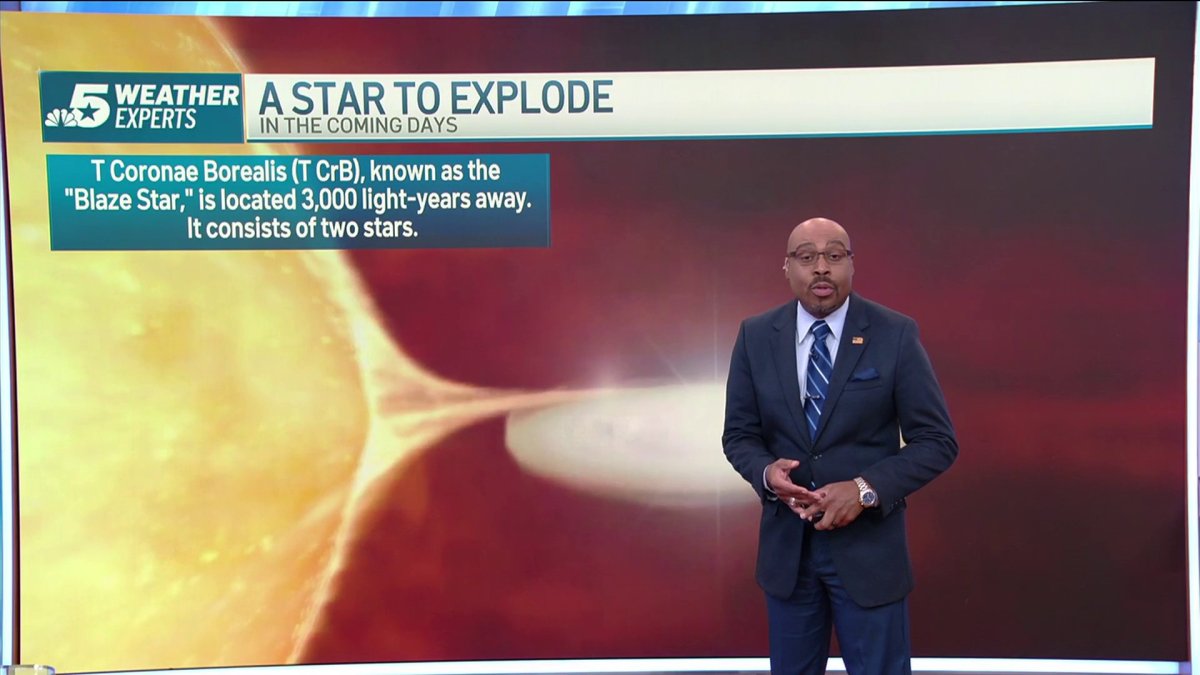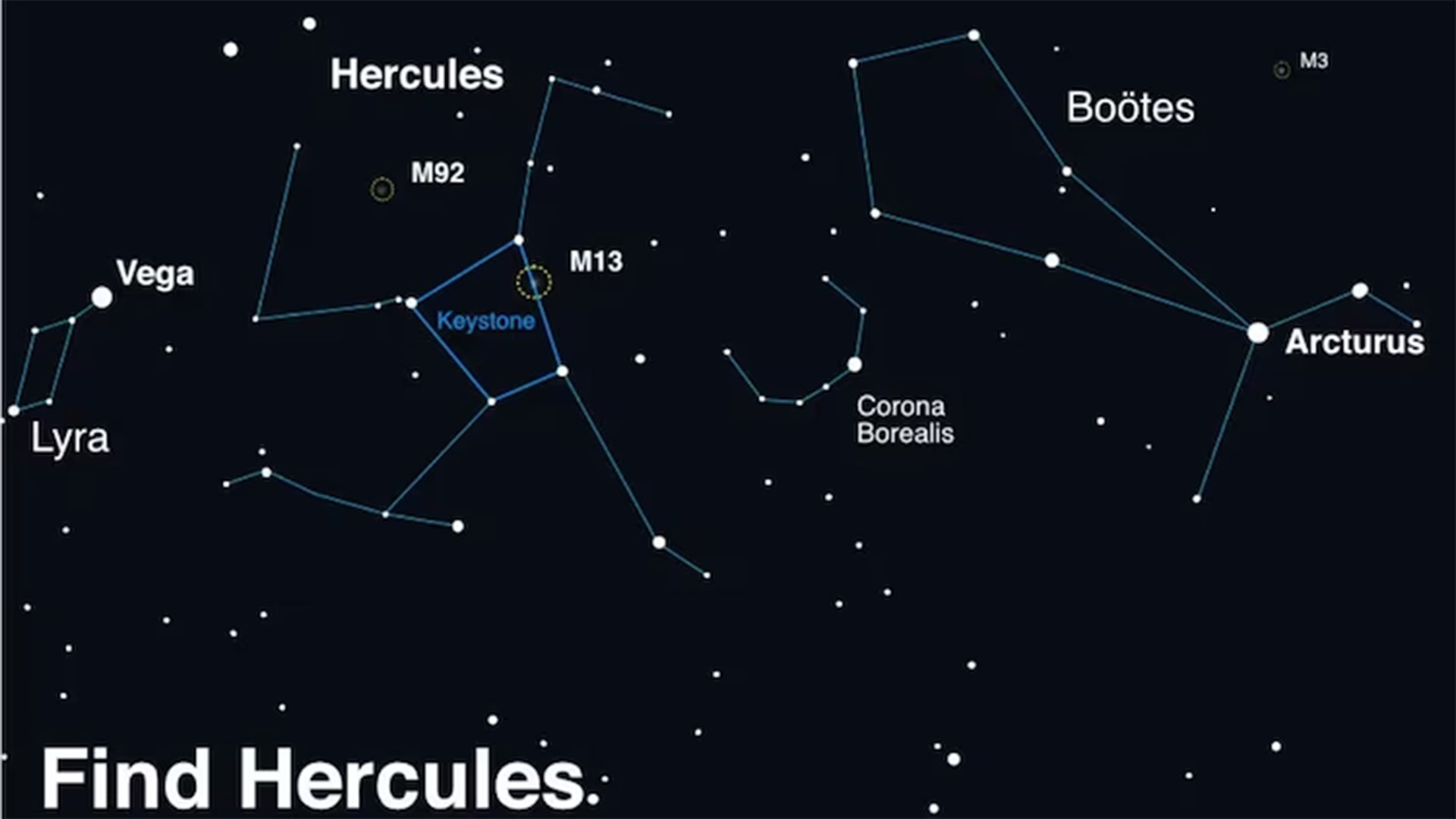
the “Blaze Star,” is on the verge of a rare and dramatic brightening. Here’s where to look in the North Texas sky to see it.
T Coronae Borealis (T CrB), known as the "Blaze Star," is on the verge of a rare and dramatic brightening. This once-in-a-lifetime explosion is about to happen any day now.
This recurrent nova, located 3,000 light-years from Earth in the constellation Corona Borealis, is predicted to explode.
Watch NBC 5 free wherever you are
WHAT IS HAPPENING?
T Coronae Borealis (T CrB) consists of two stars. Every 78 to 80 years, the white dwarf in this binary system accumulates enough material from its companion red giant star to trigger a thermonuclear explosion.
Get top local stories delivered to you every morning with NBC DFW's News Headlines newsletter.
Since March 2023, the "Blaze Star" has displayed a pre-eruption dip in brightness, typically a sign that an outburst is imminent.
This process causes the star to brighten by more than 1,000 times, creating the illusion of a "new star" in the sky. The last recorded outburst was in 1946. When it explodes, it will be in the top 50 brightest stars in the night sky
But at the peak of its eruption, it could become as bright as Polaris, the North Star. Polaris is one of the brightest stars in the night sky. This event will be visible in the North Texas sky for a week.
WHERE TO LOOK?
T Corona Borealis will rise in the eastern sky about three hours after sunset. It will become easily visible around four hours after sunset.

It will be positioned between two of the brightest stars in the night sky: Vega, rising in the northeast, and Arcturus, rising in the east.
As always, North Texas, keep looking up!

